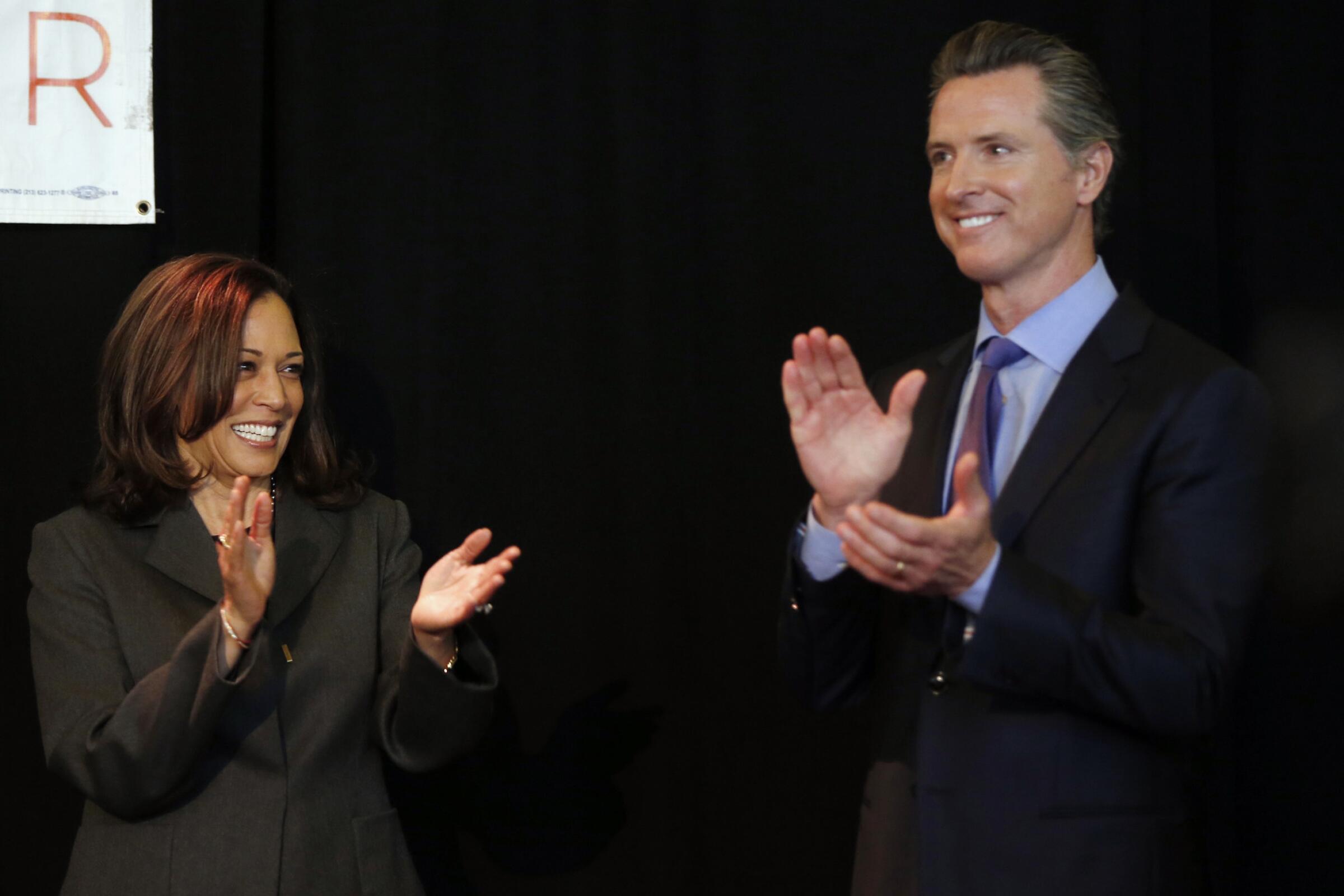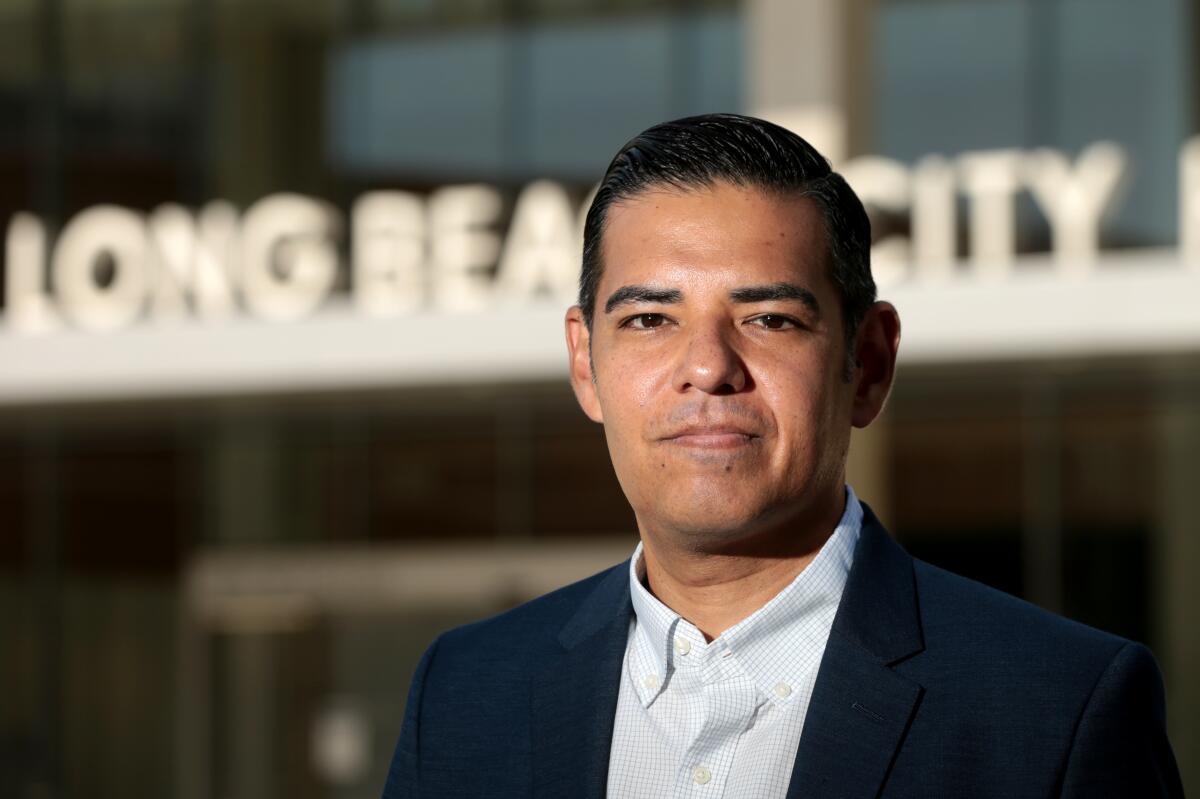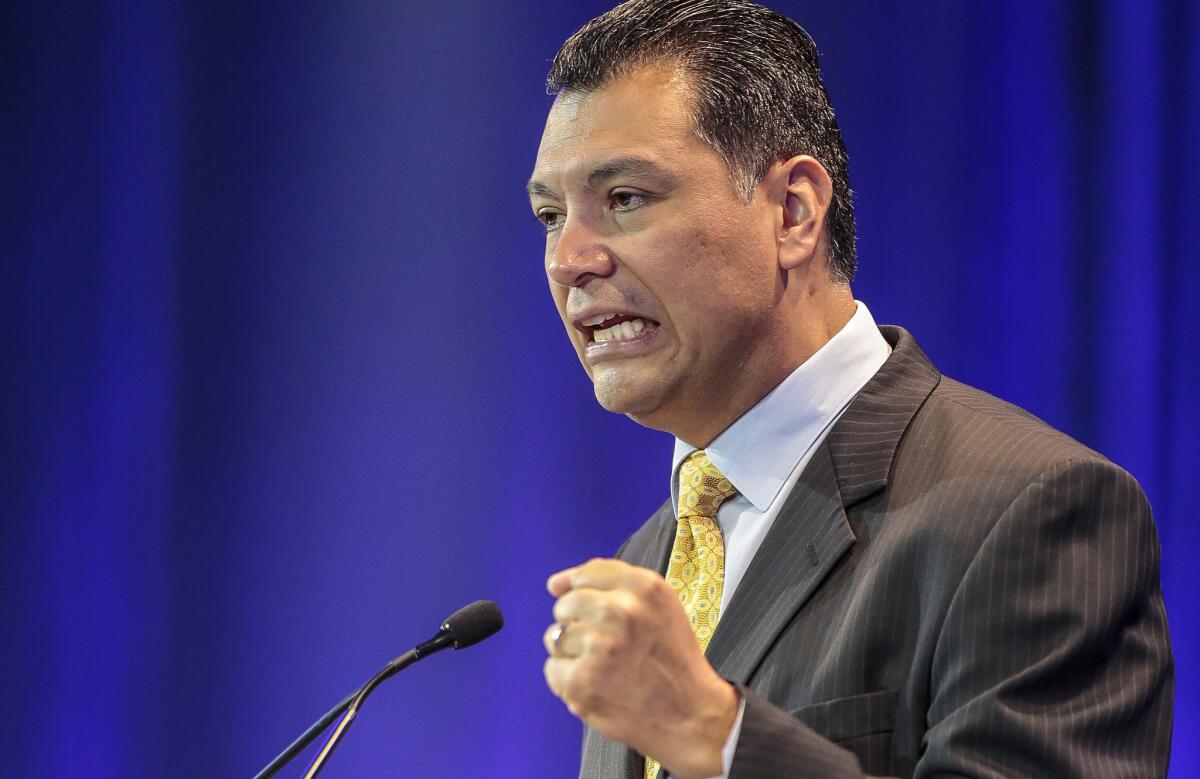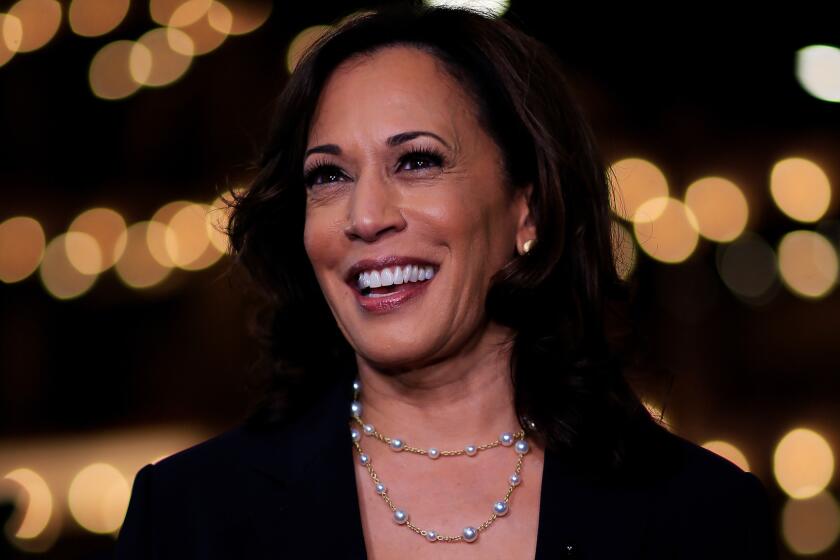With the presidential race called for Democrat Joe Biden and his running mate, Sen. Kamala Harris, on Saturday, California Gov. Gavin Newsom must now fill her vacant U.S. Senate seat — and he has the opportunity to make history.
Never shy about making a political splash, Newsom could appoint California’s first-ever Latino senator. He might select a Black woman to replace Harris, who was only the second Black woman in the nation’s history to serve in the U.S. Senate. The Democratic governor, who championed same-sex marriage while mayor of San Francisco, may choose to send to Washington California’s first senator to have come out as gay.
Newsom is already fielding entreaties to do all of the above, and the pressure promises to intensify until Harris steps down from the Senate to be sworn in as vice president. Newsom’s political calculus also may factor in the likelihood that his appointee could win the seat in 2022.
The governor could also call for a special election to fill the vacancy or opt to name a placeholder candidate who would be willing to keep the Senate seat warm until the 2022 election — but neither of those scenarios appears likely.
In congratulating Biden and Harris, Newsom said he is confident that they “can turn hurt into healing and deep-seated divisions into common ground, repair our standing around the world and rally our nation together in this time of unprecedented crisis.”
He also called Harris’ achievement inspirational, an indication of how difficult his decision may be when filling her Senate seat.
“She’s tough, she’s passionate, she’s persistent and she’s devoted a lifetime to the highest American ideal of justice for all,” Newsom said in a statement Saturday. “Today, her ceiling-shattering accomplishment will put wings on the aspirations and imaginations of young women and people of color all across this country and around the world.”
The Times reached out to a variety of political strategists for a list of the most likely contenders from whom Newsom might choose to replace Harris for the final two years of her Senate term.














